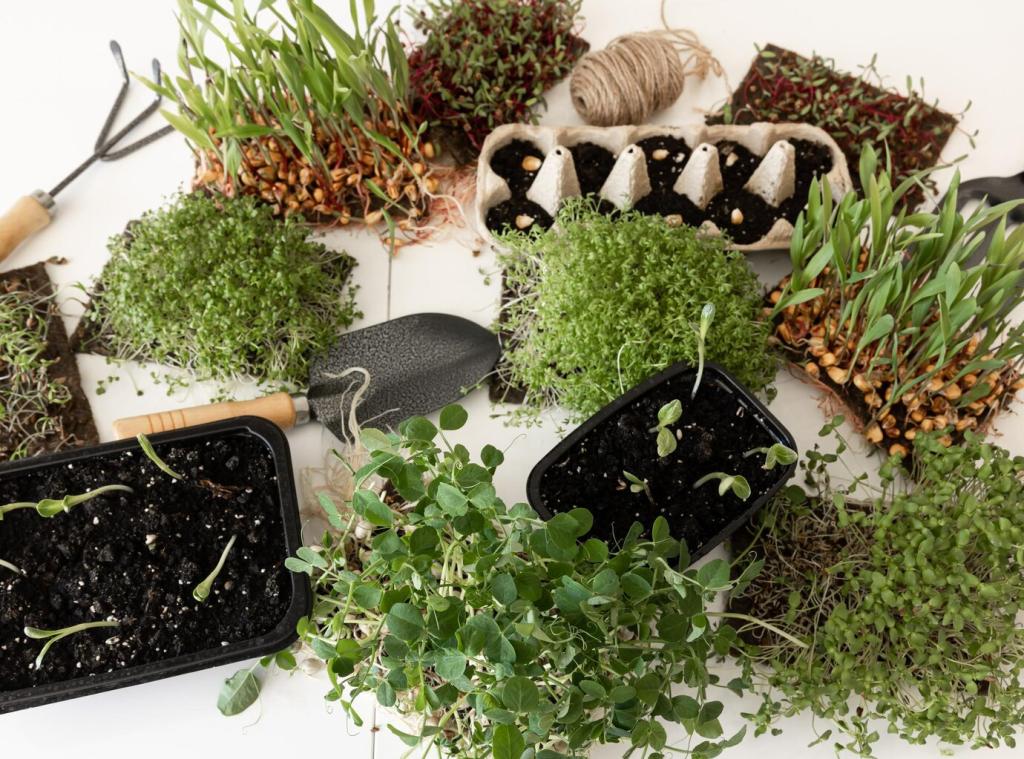Step-by-Step Guide to Establishing Your Own Herb Garden
Starting your own herb garden is a rewarding journey that brings freshness to your kitchen and beauty to your outdoor or indoor spaces. Whether you are new to gardening or looking to expand your horticultural skills, creating an herb garden allows you to have access to fresh flavors and aromatic greens all year round. This guide will walk you through the essential steps, from planning your garden to enjoying your first harvest, ensuring your herb garden thrives and becomes a valuable addition to your home or balcony.
Planning Your Herb Garden
Choosing the Perfect Location
Selecting the right spot for your herb garden greatly influences the vitality of your plants. Most herbs require at least six hours of direct sunlight each day, so survey your space for areas that receive adequate light. South-facing windows or gardens typically offer optimal conditions. Indoors, consider movable pots or window boxes that can bask in the sun. Accessibility is another key factor—plant your herbs where you can easily tend to and harvest them. Proper drainage is essential; avoid locations prone to waterlogging. Taking the time to understand your home’s microclimate and observing sunlight patterns throughout the day will enable you to choose a location that supports healthy, thriving herbs.


Selecting the Right Herbs
Your herb selection depends on several factors, including climate, available space, and intended use. Start with popular, easy-to-grow varieties such as basil, mint, parsley, and thyme if you are a beginner. If you have specific culinary or medicinal needs, research which herbs suit those purposes and are suitable for your local environment. Consider the differences between perennial and annual herbs in terms of care and longevity. Diversity is key for a robust and interesting garden, but avoid overcrowding by selecting a manageable number of plants. Planning your selection early ensures you have the seeds, seedlings, or cuttings you need and helps you create a harmonious arrangement that aligns with your taste and needs.

Ongoing Care and Maintenance
Watering Wisely
The key to watering herbs is consistency and moderation. Most herb varieties dislike soggy soil, so ensure each watering session allows the soil to become moist but not drenched. Overwatering can lead to root rot, especially in container-grown herbs where drainage is limited. Pay attention to natural rainfall with outdoor gardens and dial back watering accordingly. For indoor herbs, inspect the top inch of soil; water only when it feels dry to the touch. Early morning is the best time to water, reducing evaporation and allowing leaves to dry before night, which helps prevent fungal diseases. Developing a simple watering routine keeps your herbs hydrated and promotes healthy, aromatic foliage.
Pruning and Harvesting Techniques
Pruning isn’t just for shape; it encourages fuller, more productive plants. Regularly pinch or snip the tops of growing herbs, especially annuals like basil and mint, to spur branching and delay flowering, which maintains leaf flavor. Always use clean, sharp scissors or pruners to avoid damaging stems or introducing disease. Harvest leaves in the morning after dew has dried, when their oils are most concentrated. Take up to a third of the plant at a time, leaving enough foliage for continued growth. Proper harvesting not only provides you with fresh herbs when you need them but also signals to the plant to produce even more aromatic leaves over time.
Feeding and Soil Renewal
Maintaining soil fertility ensures long-lasting herbal vigor. While many herbs are not heavy feeders, they benefit from an occasional dose of balanced, organic fertilizer or diluted compost tea. Apply fertilizer sparingly—once a month during the growing season is generally adequate, as too much can dilute their flavor and encourage leggy growth. Refresh mulch periodically to suppress weeds and conserve moisture. Monitor the soil for compaction and gently aerate the surface if needed. Over time, container soils deplete more quickly; repot plants with fresh mix annually or as needed. Proper nutrition and soil care underpin health, disease resistance, and robust flavor in every leaf you harvest.
